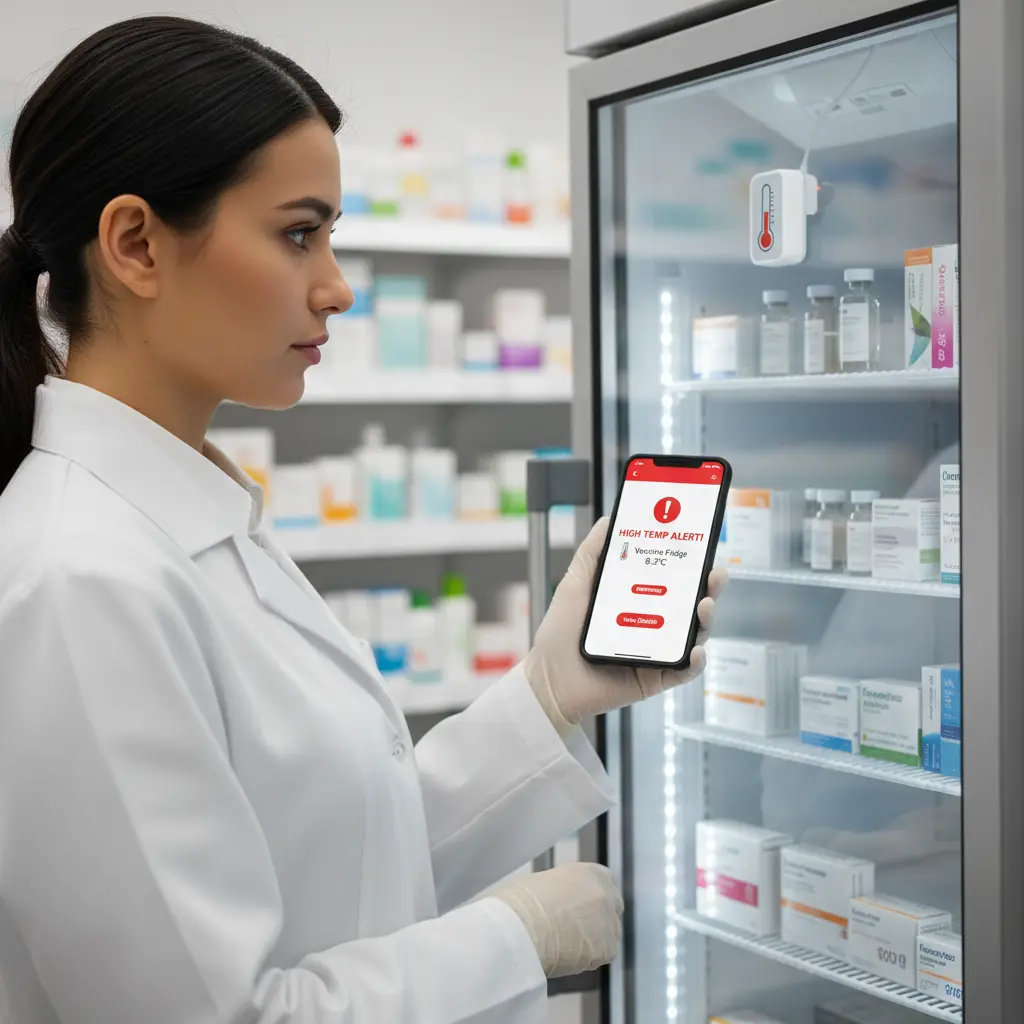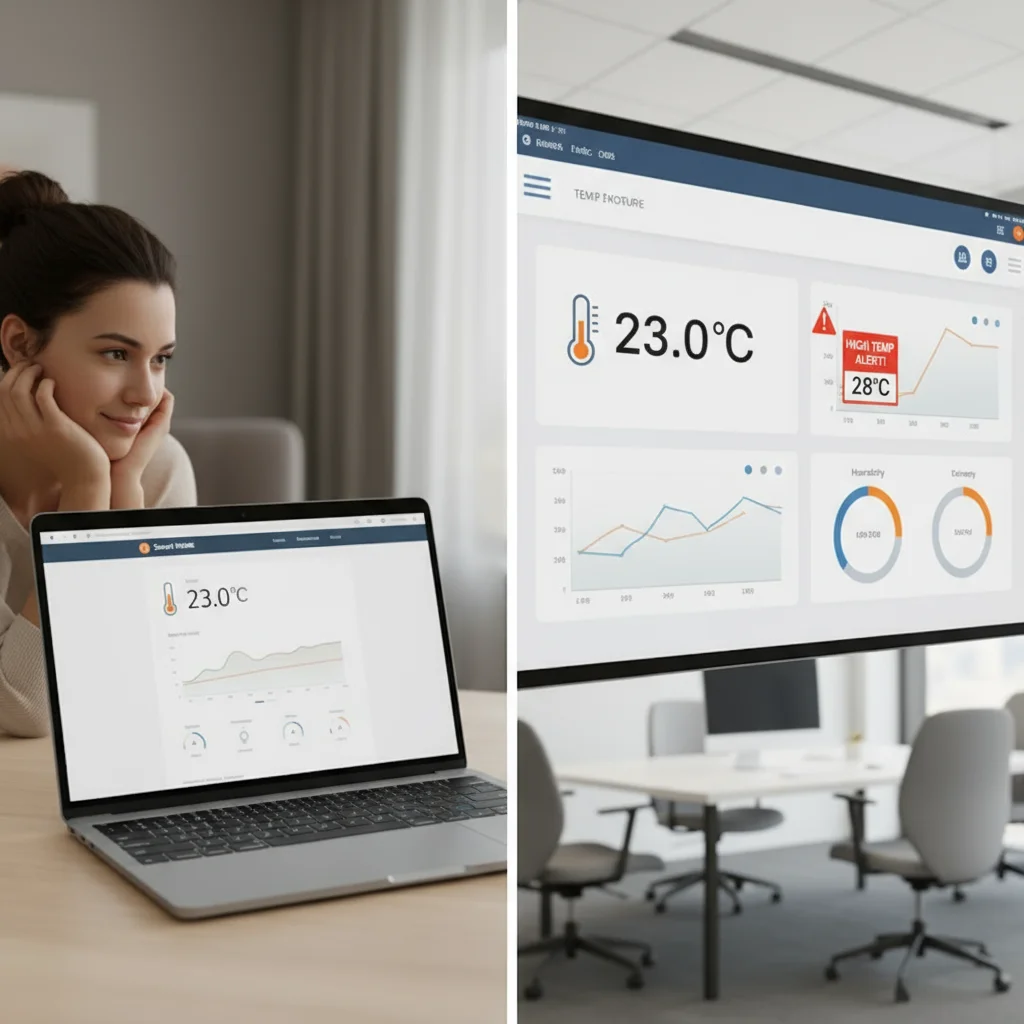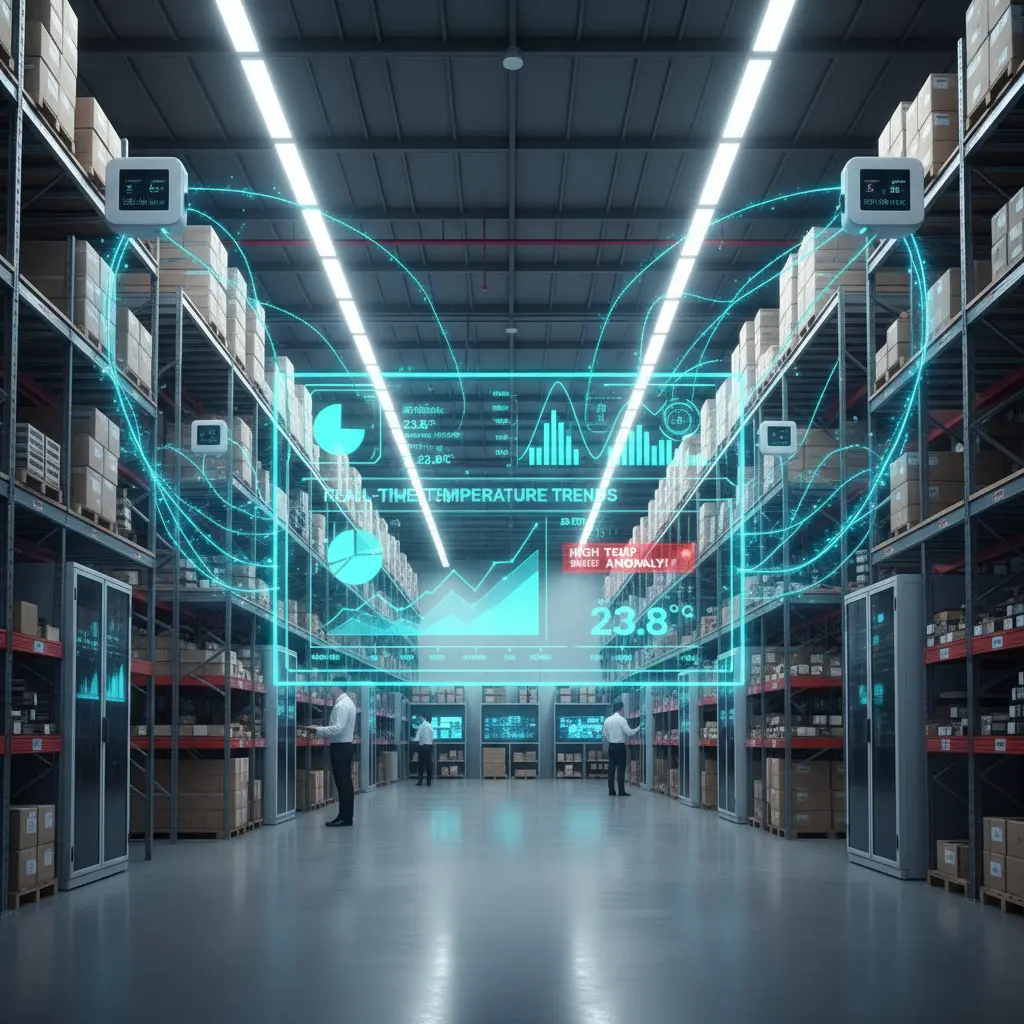Introduction
In today’s hyper-connected world, being able to measure temperature online has moved from being a handy feature to a critical necessity in many industries. Whether you’re a homeowner checking if your room is too warm, a pharmacist ensuring vaccine safety, or a data center manager avoiding server crashes, online tools for temperature monitoring make things smarter, faster, and more accurate.
Pharmaceuticals in particular must meet strict WHO guidelines on vaccine cold chain management to stay viable during storage.
But here’s the truth: not all online temperature measurement tools are created equal. Some are convenient but limited, others highly accurate but costly. The key lies in understanding their strengths and weaknesses.
This article explains the pros, cons, and limitations of online temperature measurement tools, while linking them to professional contexts—such as server room temperature monitoring and pharmacy temperature monitoring—that demand absolute accuracy.
What Do We Mean by Online Temperature Measurement Tools?
These are basically tools that let you see or keep track of temperature data from a distance, usually through apps, dashboards, or websites. The main groups are:
Web-based thermometer sites (make an estimate based on location and weather data)
Apps that work with sensors, like smart home hubs and IoT-enabled thermometers
Full temperature monitoring systems (dashboards and enterprise-grade hardware)
Check out our article What Is a Temperature Monitoring System? if you want to learn more about what makes up a full system.
Advantages of Online Temperature Measurement Tools
Convenience and Accessibility
You can check temperatures from anywhere in the world using online tools. You won’t have to walk into a room, squint at a manual gauge, or worry about the weather when you’re not there anymore.
This is especially helpful for busy professionals who need quick information, like IT managers who are in charge of server racks or pharmacists who are in charge of sensitive medical stock.
Real-Time Alerts and Notifications
The best tools do more than just measure; they also let you know. When the temperature goes above or below a certain level, they send emails, texts, or app alerts right away.
In fact, the U.S. Food & Drug Administration (FDA) mandates strict monitoring for medical products to ensure patient safety.
For some industries, this isn’t a luxury; it’s a matter of life and death. For example, vaccine stocks in a fridge must never go out of range. That’s where pharmacy temperature monitoring comes in handy, making sure that lives aren’t put at risk.

Multi-Location Central Management
Companies with more than one branch, warehouse, or server room can store all of their data in one place. One dashboard, hundreds of sensors, and dozens of sites—all of them can be seen by management from one place.
According to Uptime Institute research, unplanned IT downtime can cost organizations thousands of dollars per minute.
This cuts down on the need for constant manual checks and gives managers a big-picture view of how stable temperatures are across the whole company.
Integration with Broader Systems
Many modern online temperature measurement tools work well with facility management, HVAC systems, and even AI-powered analytics. That means using energy more wisely, keeping better records of compliance, and becoming more efficient.
IT professionals can improve uptime, lower cooling costs, and protect expensive hardware by using these tools along with monitoring the temperature in the server room.

Drawbacks and Limitations of Online Temperature Measurement Tools
Accuracy Can Vary
Not every tool can guarantee perfect accuracy. Calibrated IoT sensors are much more reliable than a free online thermometer website. If important things depend on stable temperatures, rough estimates aren’t good enough.
This difference is why businesses shouldn’t just do basic checks. It’s easy to check the temperature online with apps or websites, but only professional-grade solutions can really keep you safe and in compliance.
Dependency on Internet Connectivity
If Wi-Fi drops, so does your connection to real-time data. While advanced systems may have local backups, basic tools may result in data gaps or blind spots.
Hardware and Maintenance Costs
Smart sensors, cloud storage, and software licenses cost money. Enterprises benefit in the long run, but small businesses and individuals may face adoption hurdles due to high upfront costs.
Data Security Risks
With online access comes cybersecurity risk. When data moves over wireless networks, it must be encrypted and properly secured to avoid leaks—especially in regulated industries like healthcare.

Online Tools vs. Full Systems
A casual online check is very different from a strong monitoring ecosystem:
Basic Tools: Simple to use, cheap, and great for home or office use.
Advanced Systems: Sensors, dashboards, alerts, compliance records, and auditing tools that are good enough for professionals.
For a more in-depth look at how full monitoring systems work, check out What Is a Temperature Monitoring System? | Complete Guide.

Best Use Cases for Online Temperature Measurement Tools
Homes and offices: keep an eye on things casually, make changes for comfort, and save energy.
Pharmacies and Healthcare: Make sure that medical supplies stay within a controlled range and that there are full audit trails.
Data Centers and IT Environments: Keep things running and stop equipment from breaking down.
Cold Storage and Logistics: Keep food and other sensitive items safe while they’re being moved.
Research Labs: Keep experiments that depend on a controlled climate accurate.
Each use case shows that the level of risk must match the level of reliance on these tools. Casual users may be able to get away with small mistakes, but professional operations cannot.
Future of Online Temperature Measurement
As IoT, cloud systems, and AI become more popular, online temperature measurement is moving toward predictive analytics. Soon, monitoring tools will do more than just keep an eye on data; they will also be able to predict problems before they happen.
According to IEEE Spectrum, AI-powered IoT analytics are pushing monitoring systems toward predictive intelligence.
When you add blockchain-led audit trails for compliance, industries will have rock-solid proof that the temperature stays stable all the way through their supply chains.

Conclusion: Weighing the Pros and Cons
Tools for online temperature measuring are powerful, easy to use, and getting better all the time. For everyday needs, nothing beats their convenience; you can get quick information about the environment with just a touch of a screen.
Businesses should think of these tools as part of a larger monitoring ecosystem for serious uses, like keeping an eye on the temperature in a server room or a pharmacy. When the stakes are high, accuracy, compliance, and reliability are more important than convenience.
Want to learn more about the basics? Check out What Is a Temperature Monitoring System? | Complete Guide. If you’re new to the subject, our article “Check Temperature Online | How to Accurately Measure Room Temperature” is a good place to start.
Ultimately, the right tool depends on the situation, but everyone needs to keep an eye on things.

